Almost all dogs are suitable for massage. Most of the dogs I see are simply pets but some have also been involved in activities such as agility or obedience work or attend shows or are worked.
Dogs are just like people in that their everyday life can have an effect on their muscles and can cause stiffness and soreness if pulled or overused. This can lead to pain and discomfort which if left untreated may lead to a tightening of that muscle or other muscles which get overworked to compensate for the injury. Dogs that take part in agility, either competitively or just for fun, are particularly prone to injury due to the strenuous nature of the courses used. Agility dogs may benefit from massage not only because it allows for better flexibility and range of movement but because it means the dog is better able to focus on each element of the agility course as it is not restricted in its movement or distracted by pain or discomfort. Dogs that compete in shows may benefit from massage treatments in order to ensure they are standing evenly and moving freely. Dogs taking part in obedience trials can develop problems due to repeated actions and due to the position obedience dogs tend to hold their heads to look at their handlers. The propulsion and sudden stopping required in a sendaway can cause problems in the front end of the dog which is used for breaking and the back end used to drive the dog forwards. Working dogs are often involved in highly strenuous repeated activities which can lead to muscle strains and pain and discomfort. They are trained to develop great levels of stamina to allow them to work for long periods of time and will often continue working despite injury which can lead to further problems as the muscles elsewhere in the body compensate.
Signs to look out for which may indicate a muscular problem.
- Stiffness on rising from lying on the floor
- Slowing down when out for walks or not wanting to go for a walk
- Hopping or limping or standing with less weight on one leg
- Twitching in muscles, particularly when touched or stroked
- Wobbly back legs
- Changes in behaviour particularly if appears depressed or unwilling to play or be touched
- Difficulty with steps and stairs or getting in and out of the car
- Knocking down jumps, missing contact points, reluctance to weave or use specific pieces of equipment
- General slowing down or less willing to work as before
- Slow to complete tasks
- Yelping from pain
- Unusual movement during walking, trotting or running
If you have noticed your dog showing any of these signs then a massage might be just what they need to help stretch out tired or tense muscles and aid recovery from an injury

No comments yet.